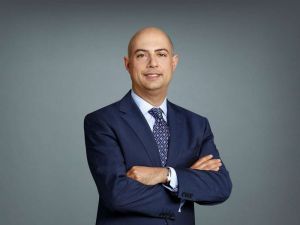
How can people brought back from death after cardiac arrest report having experienced lucid and vivid memories and recollections without a functioning brain? The study of near-death experiences is challenging the idea our consciousness fades to black when our body expires.
He could see a nurse and doctor, a bald, “chunky fella” dressed in blue hospital scrubs. He watched as they frantically worked on his body, which was remarkable, considering he was, essentially, dead.
The man had suffered a cardiac arrest. Normally there is no measurable, meaningful brain activity after the heart stops beating. Within two to 20 seconds the brain “flatlines.”
But the man would later tell researchers that he could see an unfamiliar woman beckoning from a corner up in the ceiling. “I can’t get up there,” he remembered thinking to himself, and then the next second, “I was up there, looking down at me.”
He said he saw his blood pressure being taken, and a doctor putting something down his throat. He saw a nurse pumping on his chest. He accurately and vividly described the people, sounds and events of his “resurrection.”
Dr. Sam Parnia estimates the man experienced conscious awareness for three to five minutes in the absence of detectable brain activity, a time, he has said, “when no human experience should be happening whatsoever.”
The case was part of a widely reported study Parnia published in 2014 called AWARE — the awareness during resuscitation trial, the world’s largest study of what happens to the human mind and consciousness in the early period of death.
Parnia, now a critical care and resuscitation specialist at New York’s NYU Langone Medical Center, believes human consciousness may continue after our heart stops beating for some undetermined period of time.
Evidence from AWARE and other studies, he says, raises the possibility that the mind or consciousness — the psyche, the “self,” the thing that “makes me Sam” and that makes us uniquely who we are — may not originate in the brain and may be a separate, undiscovered scientific entity, similar in nature to the electromagnetic waves that can carry sound and pictures. Modern science simply lacks the tools to show it. When we die, that entity we call consciousness or the self doesn’t necessarily become “immediately annihilated,” Parnia believes...
He’s now conducting AWARE II, and would welcome Canadian collaborators.
His goal is to study 1,500 people in cardiac arrest. When a “code” is called, researchers will be alerted and dispatched to resuscitation rooms carrying backpacks consisting of portable brain oxygen monitoring devices. The plan is to measure, second by second, the oxygen levels inside the brain. There will also be a portable EEG to measure whether the brain is functioning. As well, patients will be fitted with wireless headphones, through which random words and sounds (which need to remain secret until the study is over) will be transmitted via a tablet. Images will also be beamed upwards as people undergo CPR. Parnia doesn’t expect anyone to open their eyes. No one ever does in cardiac arrest.
“We can then look at survivors and see if they can recall any of these stimuli, and when they were able to receive information, and how that relates to their brain resuscitation quality,” Parnia announced at a recent meeting of the European Resuscitation Council.
Ultimately the goal is to try to better understand how to bring back a whole person, not a husk of one, with an intact brain and mind, by developing a kind of gold standard brain oxygen level that doctors should target during cardiac arrest and CPR in order to optimize survival without brain damage.
But a tidy flip side, Parnia says, is that “we can also study what happens to the human mind and consciousness after people go beyond the threshold of death.”
In other words, how does the mind relate to the brain? “Can consciousness or the self continue to work and exist when we die?”...
The moment the heart stops, the brain shuts down from a functional perspective, he said. “Yet, paradoxically, what we started to see is that millions of people have now been resuscitated, and many of them have reported these very lucid, well-structured thought processes.” They’re able to form memories, describe conversations and what people were wearing. “Except that their brain has shut down and they’ve gone through death. Which is completely a paradox, it should not happen. If your mind is simply a product of your brain, if your brain has shut down, there should be no consciousness.”...
The original AWARE trial involved 2,060 cardiac arrests across 15 hospitals in the U.S., the U.K. and Austria. Of those, 330 people survived. Nine who were able to undergo detailed interviews had experiences compatible with a near-death experience, Parnia and his co-authors reported in the journal, Resuscitation. Two reported an out-of-body experience; including the man who reported “seeing” and “hearing” things as he hovered near the ceiling over his lifeless body...
If nothing else, Parnia says that people who come back from clinical death — accepting that they were technically dead —who report having seen brilliant lights or entering a supernatural realm often become wholly transformed by the experience. They become more altruistic, less self-centred, more engaged with helping others. Less afraid of death. “They view the world in a different way,” Parnia says.
SOURCE: Excerpted from article by Sharon Kirkey, National Post
SURVIVORS: To share your stories about "near-death" experiences, write to info [at] sca-aware.org (subject: Near-death%20experiences) .
